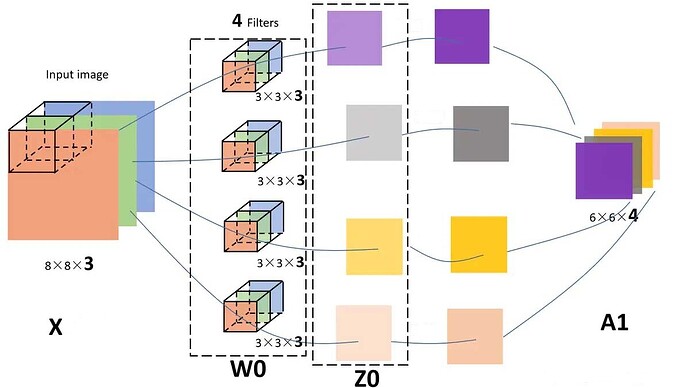Hi PyTorch Team,
I have an input tensor of shape (B, C_in, H, W), conv (C_in, C_out, K, K, Pad= K//2) and a mask of shape (B, C_in, H, W) . I wanted to multiply the intermediate 5D output with my mask before carrying out the final summation.
The pictures of the usual and convolution with masking is as follows:
The usual convolution operates as follows:
However, I want to mask out the intermediate 5D output with the mask matrix before the summation across the channels as shown in the following updated figure
Figures’ Courtesy: developpaper.com
I tried getting the intermediate 5D tensor first. However, I am not able to extract the intermediate 5D tensor of shape (B, C_out, C_in, H, W). Following are the things I tried:
in_channels = 5
conv = nn.Conv2d(in_channels, 20, 3, groups= in_channels, padding= 1)
x = torch.randn(1, in_channels, 64, 64)
output = conv(x)
print(output.shape)
# torch.Size([1, 20, 64, 64])
- I also tried unfolding it
inp = torch.randn(1, in_channels, 10, 12)
w = torch.randn(2, in_channels, 3, 3)
inp_unf = torch.nn.functional.unfold(inp, (3, 3))
print(inp_unf.shape)
out_unf = inp_unf.transpose(1, 2).matmul(w.view(w.size(0), -1).t()).transpose(1, 2)
print(out_unf.shape)
out = out_unf.view(1, 2, 8, 10)
# torch.Size([1, 2, 80])
Since I could not find any working solution on the forums, I decided to post here. It would be great if you could answer this question. In case it is a duplicate post, would you mind pointing me to the correct answer.

